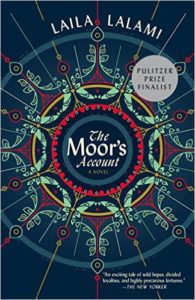 How do you tell a well-known story from a different perspective? Many historians probably ask themselves this question on a somewhat frequent basis. And when they find an answer it might mean that they have a new project on their hands. Ideally, this process would involve a new trove of documents or new ideas about how to interrogate familiar sources. However, what do you do when you have neither option, but know that the perspective you wish to recover is an important one?
How do you tell a well-known story from a different perspective? Many historians probably ask themselves this question on a somewhat frequent basis. And when they find an answer it might mean that they have a new project on their hands. Ideally, this process would involve a new trove of documents or new ideas about how to interrogate familiar sources. However, what do you do when you have neither option, but know that the perspective you wish to recover is an important one?
Historians of what at the time many regarded as the ‘new social history’ tried to do so by examining quantitative evidence. By applying pressure from the right angles on statistical and other forms of “dry” data they tried to write history ‘from the bottom up.’ Although such scholarship has proven illuminating for the purpose of social history, for intellectual historians such methods can only achieve so much. For at the end of the day intellectual historians must have some form of subjectivity to work with. We need to examine texts written by historical subjects if we wish to do right by them. Otherwise we invite too much speculation—or maybe more speculation is exactly what we require…
Indeed, one way to bypass this predicament is to write an historical novel based on considerable doses of speculation. This is exactly what Laila Lalami set out to do in her recent novel The Moor’s Account
. And while this formula of giving voice to the voiceless is outside the boundaries of what historians feel comfortable with, it was illuminating to me particularly as an historian: if only to realize how much we cannot and do not know about history and how historical novels can at times teach us more about history than any historian could.
The Moor’s Account tells the story of the famous botched expedition into North America in 1527 led by the conquistador Pánfilo de Narváez. Though much of what we know of this expedition and its aftermath comes to us through an account of the expedition written by one of its four survivors, Álvar Núñez Cabeza de Vaca, Lalami unfolds the narrative from the perspective of the only non-Christian who survived the expedition, the Moor slave Etebanico. She of course did not have any text written by this historical subaltern, but the well-researched narrative employs a combination of deduction and imagination to weave a compelling tale: early America as seen from the eyes of a Muslim who came to America as so many others did—a subjugated slave.
To endow her narrator with a full fledged subjectivity Lalami not only relates the history of the expedition, but weaves into the narrative the full biography of Estebanico. Here too she had very little to work with, yet historically speaking I found these parts particularly important. As an United States/North America historian these were for me some of the most arresting parts, for they linked Moroccan, Spanish and American history in a way that I never envisioned. Indeed, in this regard The Moor’s Account is also fascinating Atlantic history that thrusts together what usually, to westerners at least, seem like disjointed traditions. It is by turns illuminating and then humiliating to realize that you never fully grappled with the question of alternative subjectivities in American history. Thanks to Lalami the story of the Narváez expedition, already one of the most vivid accounts we have of early America, has become more complete, at least as I now think of it.

0